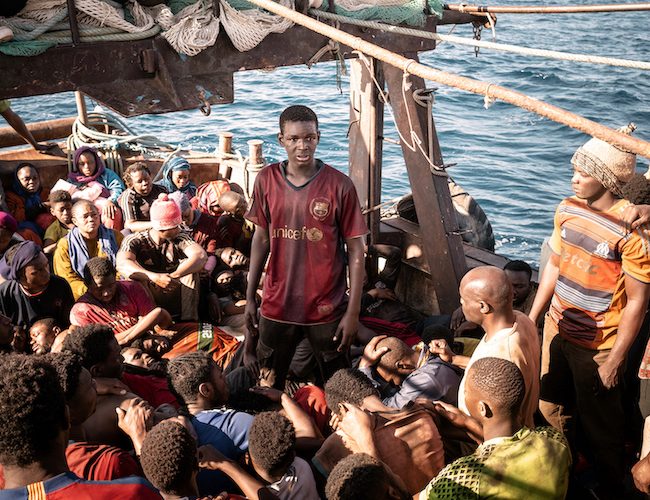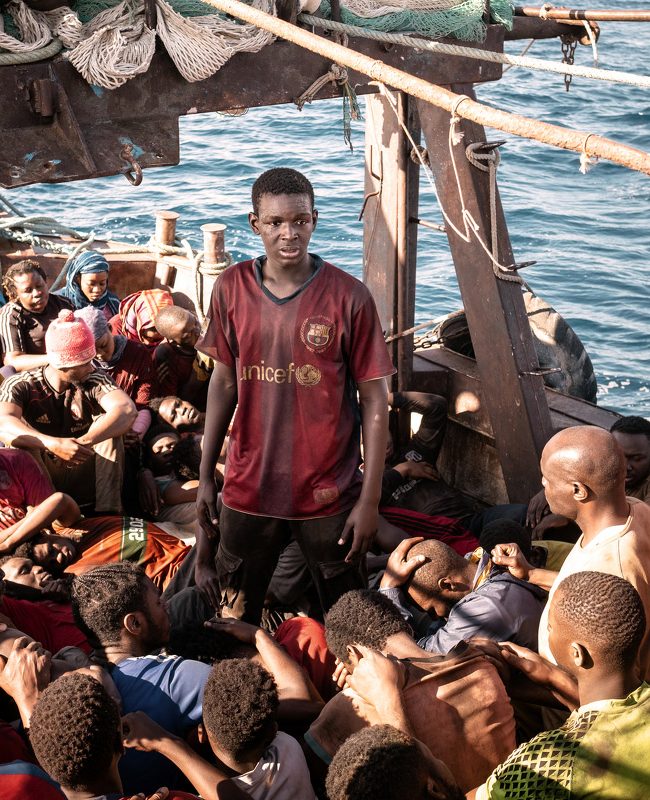A Conversation with Matteo Garrone (IO CAPITANO)
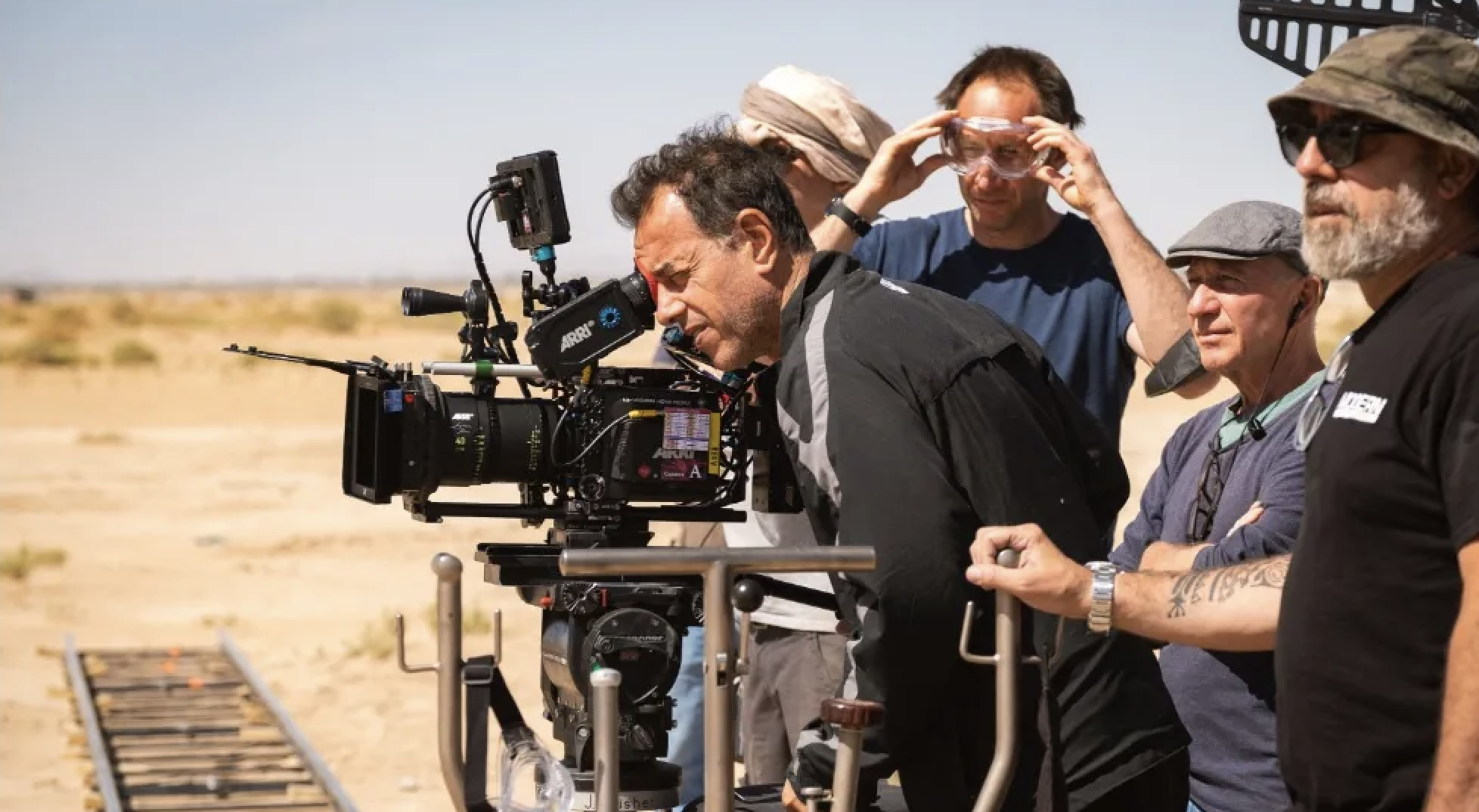
Matteo Garrone is a master filmmaker from Italy. He has been working in the film industry since the 90s and has written and directed over 10 films. Matteo was born in Rome in 1968 and is the son of theater critic, Nico Garrone. Since the early 2010s Garrone has been a staple at The Venice and Cannes film festivals amongst various other prominent international film festivals. His latest film Io Capitano finds him telling a story that is outside of his comfort zone. He is directing actors speaking a completely different language and telling a story separate from anything he has experienced. The film remains powerful and authentic as Matteo collaborated with his cast and crew to create something real. I spoke with Matteo about his latest heartbreaking masterpiece in the following conversation edited for length and clarity.
Hammer To Nail: Matteo, thank you so much for taking the time to speak with me today. I am so excited to talk to you about this new film. What was it that made you need to tell this story right now?
Matteo Garrone: What pushed me to tell this story was that in Europe this kind of thing happens all the time. We see on the news everyday about a new boat of migrants. Sometimes alive, sometimes dead. These people often leave their families and take this risk based on their dreams, desires, aspirations and passions. The idea for the movie was to show the parts of this journey that not many people know about. I wanted to give a voice to people who often do not and tell the story from their point of view.
HTN: You are coming from an outside perspective on this situation. What was it like for you to try and put yourselves in the shoes of these characters, what kind of research did you do?
Matteo Garrone: I immediately understood that the only way to make this film was to do it with them. I trusted them, they trusted me and we made the movie together. Behind every frame of the movie there is a true story. All of the non-actors were people who had actually made the journey themselves. I wanted to show the world an authentic version of this story. Sometimes when people tell their stories of how they made it to Europe, people do not believe it. It was very important to be as true and authentic to the story as possible. In the last 15 years, 27,000 people have died making this journey. It is a tragedy. The story is fiction but it is also filled with truth.
HTN: The cinematography in this film is excellent. It does a great job of showcasing beauty amongst the gritty horrors of this film, talk about what you and cinematographer Paola Carnerra wanted to achieve with the look of this film?
MG: Paola was very important to this movie. He did a great job keeping everything simple. We wanted the audience to not get so caught up in the formal elements of the film, but at the same time, we did not want it to feel like a documentary. In talking with Paola we agreed that we wanted to take ourselves out of the movie as much as we could.
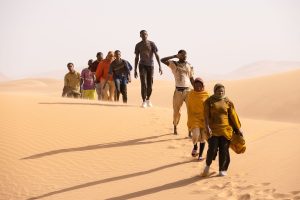
A still from IO CAPITANO
HTN: Well it came out great. You are working with many first time actors in this film, What was that experience like for you and what did the film gain from utilizing untrained actors as opposed to classically trained?
MG: The two stars of the film had been acting but this was their first experience with cinema. They share with the protagonist the desire to leave their country. I never gave them the script. I never wanted them to know if they would be successful or not in arriving. They had to figure it out day by day and I think they were excellent.
HTN: The desert sequences are amazingly shot and absolutely brutal in equal measure.you guys were on location so what was that like and how did you guys pull off the moment with the floating woman?
MG: We wanted to be as true as we possibly could. We recreated the situation in the desert of Morocco. We did tons of research to make sure our depiction was as accurate as possible. As I said It was such a privilege to work with people who had been through such things. They assisted me in hashing out the details and bringing this truth to the big screen. The floating woman was an idea originally in the script to show the wound and trauma that he has in his soul. It is the journey of a boy who starts as a kid and becomes a man. With this moment we are able to show what is happening inside of the character’s mind. He is guilty that he could not save this woman’s life.
HTN: Right at that moment where Mousa (Moustafa Fall) is taken we get a continuous shot where we watch Seydou (Seydou Sarr) stare off into the distance, the darkness stretching miles on either side of him, what was your instruction for Seydou in that moment and what were you going for with that shot?
MG: Seydou was a very pure actor. He was very human and innocent. I explained to him the scene and then I was the first spectator to see what he would do. Almost every time Seydou would make the perfect interpretation of the script. Without any rehearsal he was always ready and in character. He was always working with the art. It was not necessary to tell him what to do. I would set the scene and they would lead it with their emotions.
HTN: Well I think the room you gave them led to beautiful performances. The relationship between Seydou and Martin is so truly beautiful, what was your thinking behind writing this dynamic and how did you direct them? There is just so much humanity.
MG: It was very important. This is again something connected to a true story. The film passes from one horrific thing to the next and it was very important to have someone human in there. I saw it as human solidarity. Martin provides moments of light. He is probably the most well known actor in the cast. It was very important for us to cast someone who was not only human but looks like a father. That positivity was everything for us.
HTN: The moment that they say goodbye to each other really brought a tear to my eye.
MG: Yeah, me too.
HTN: Another really powerful moment was the reunion with Mousa. Their performances are incredible. For you, why does Moussa want to go home, why does he regret their decision, how did Moussa and Seydou basically flip flop their sentiments?
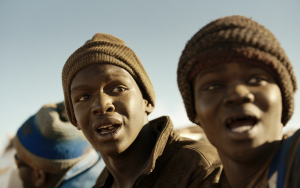
A still from IO CAPITANO
MG: This is the classic structure of the journey of the hero. At the beginning it is Mousa trying to push Seydou to go. When they meet again, they have changed. Seydou is no longer scared. Not only did this work for our story, it was again based on truth.
HTN: How did you guys shoot on that boat with so many extras?
MG: It was very challenging. The whole film was challenging though. I was shooting with actors speaking a totally different language and are a part of a culture that is very far from mine. The key was to do the movie together. Collaborate as much as I could. For the boat, of course we were a lot of people and it was tough to shoot but it worked out. There were many actual immigrants on the boat that helped make the situation as realistic as possible.
HTN: It is a very powerful moment. I need to talk about this final shot of the film. It is truly one of the best I have ever seen. Talk about your decision to never show Italy and end on Seydou’s face which is filled with so many conflicting emotions.
MG: The moment they arrive in Italy that is the start of a new chapter. I preferred to stop before. Seydou was so strong and powerful and the way he handled the scene was unexpected in a good way. The whole project was a gift. Also we shot in chronological order so that last shot really allowed him to release and project all the emotions from the different parts of the journey. I was crying and so was the whole crew. It was a beautiful moment.
HTN: I was crying too, as I was for much of the film. Thank you so much for taking the time to speak with me. The film is amazing.
MG: Thank you for your time and the nice things that you said!
– Jack Schenker (@YUNGOCUPOTIS)








